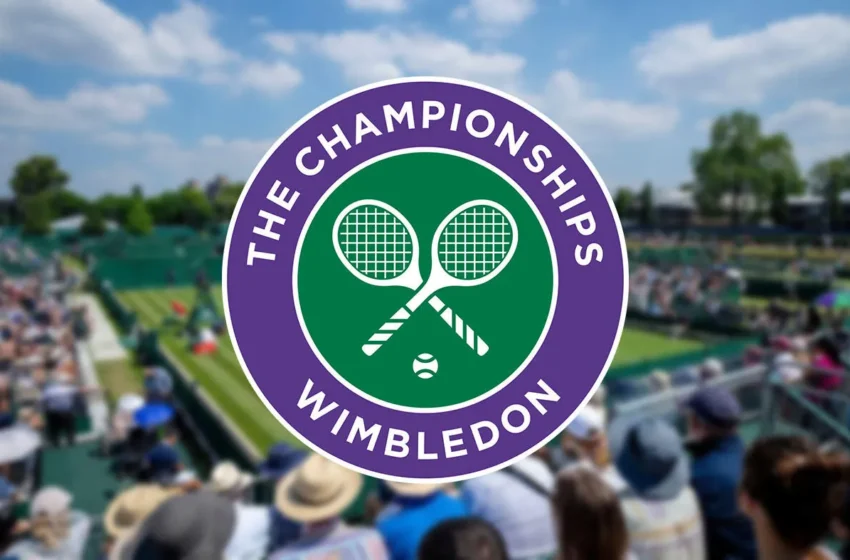History and tradition of Wimbledon…everything you need to know

Wimbledon
As Wimbledon 2025 begins, tennis fans around the world are once again drawn to the iconic grass courts of the All England Lawn Tennis and Croquet Club in London. Wimbledon is not merely a tennis tournament — it is a cultural and sporting institution, steeped in heritage, excellence, and tradition. To fully appreciate the grandeur of the Championships this summer, one must explore the elements that elevate Wimbledon beyond sport into the realm of legacy.
Origins and Evolution: From Victorian Beginnings to Global Phenomenon
The origins of Wimbledon date back to 1877, when the All England Croquet Club hosted the inaugural Lawn Tennis Championship on a single grass court. With just 22 male competitors, the event was modest by contemporary standards, yet it signaled the birth of organized competitive tennis.
Throughout the late 19th and early 20th centuries, Wimbledon expanded in both scale and stature. The addition of women’s singles in 1884, followed by men’s and women’s doubles and mixed doubles events, transformed the Championships into a comprehensive tournament. As the professional era dawned, Wimbledon solidified its global prestige. Today, it remains the only Grand Slam played on natural grass—the sport’s original surface—preserving its unique character and historic ambiance.
The Grass Court Challenge: Surface, Strategy, and Style of Play
Grass is widely regarded as the most complex and demanding surface in professional tennis. It is fast, slick, and produces a characteristically low bounce, conditions that reward athleticism, precise footwork, and lightning-quick reflexes. The ball tends to skid through the turf, especially in the early rounds, favoring aggressive tactics and shortening points significantly.
Historically, grass courts were dominated by serve-and-volley players—athletes who relied on powerful serves followed by quick approaches to the net. However, as racket technology advanced and baseline play evolved, the modern grass game has become a battleground for versatile athletes who blend aggression with consistency. Mastering grass requires rapid adaptation, as the surface wears and changes throughout the fortnight, particularly along the baselines.
The All England Club’s commitment to excellence is evident in its meticulous court maintenance. Grass is cut to exactly 8 millimeters in height, and the courts are rested and re-sown annually. Such precision ensures playing conditions remain consistent, yet challenging—adding to Wimbledon’s unique prestige.
Time-Honored Traditions: The Soul of Wimbledon
Wimbledon is defined not only by its athletic excellence but also by the centuries-old customs that continue to shape its identity. Chief among these is the strict all-white dress code, a rule rooted in Victorian-era standards of decorum and cleanliness. Players must wear predominantly white apparel, with only the most minimal trim in other colors permitted. Even accessories such as headbands, wristbands, and shoes must conform, reinforcing Wimbledon’s visual elegance and timeless charm.
Equally iconic is the tradition of strawberries and cream, a staple for spectators that has become synonymous with British summertime. Each year, over 28,000 kilograms of strawberries are consumed alongside nearly 7,000 liters of cream—an enduring ritual that connects generations of fans.
The Royal Box, a distinguished feature of Centre Court, regularly welcomes members of the British Royal Family and notable public figures. Its presence reinforces Wimbledon’s place within the broader cultural and ceremonial fabric of the UK.
Another distinctive element is The Queue—a structured, respectful system that allows thousands of fans to line up, often overnight, for the chance to purchase same-day tickets. It embodies Wimbledon’s democratic spirit, ensuring accessibility alongside exclusivity.
In contrast to most modern sporting events, Wimbledon enforces a strict no on-court advertising policy, preserving a clean aesthetic that keeps the focus on the players and the sport itself rather than on commercial interests.
Legendary Champions and Historic Moments
Wimbledon has served as the backdrop for some of tennis’s most iconic chapters. Björn Borg, with his ice-cool demeanor and relentless baseline play, captured five consecutive titles from 1976 to 1980. Martina Navratilova’s record of nine singles titles remains unmatched, reflecting her unmatched dominance and athleticism.
Roger Federer’s name is virtually synonymous with Wimbledon. His eight titles and impeccable style made him a grass-court icon. Serena Williams, with her unmatched power and mental resilience, captured seven singles titles, cementing her legacy across eras.
Among the most unforgettable moments is the 2008 men’s final between Federer and Rafael Nadal, often regarded as the greatest tennis match ever played. Spanning nearly five hours and concluding in near darkness, it symbolized the passion, drama, and physical toll of elite-level tennis.
Each year, Wimbledon adds new narratives—rising stars, underdog stories, and emotional triumphs that echo through Centre Court and beyond.
Wimbledon in the Modern Era: Innovation and Global Impact
Though rooted in tradition, Wimbledon has embraced innovation to remain at the forefront of the modern game. The introduction of Hawk-Eye technology in 2007 allowed players to challenge line calls with precision, enhancing fairness and transparency. The retractable roof on Centre Court, and now No. 1 Court, has minimized rain delays, ensuring uninterrupted play and a better spectator experience.
The tournament also reflects broader social progress. Through its support for global diversity and inclusion, Wimbledon increasingly showcases players from a wider range of countries, cultures, and backgrounds, highlighting the global reach of tennis.
Environmental stewardship is another area where Wimbledon is evolving. The All England Club has implemented sustainability initiatives, from eco-conscious court maintenance to responsible sourcing of food and materials, underscoring its commitment to the future.
Today, Wimbledon is not just a British tradition—it is an international celebration. Broadcast in over 200 countries, the Championships captivate a global audience and inspire millions. Its blend of athleticism, heritage, and spectacle continues to set the gold standard in sport.




